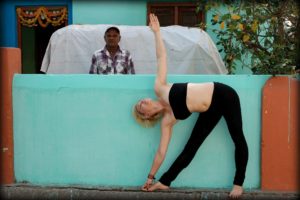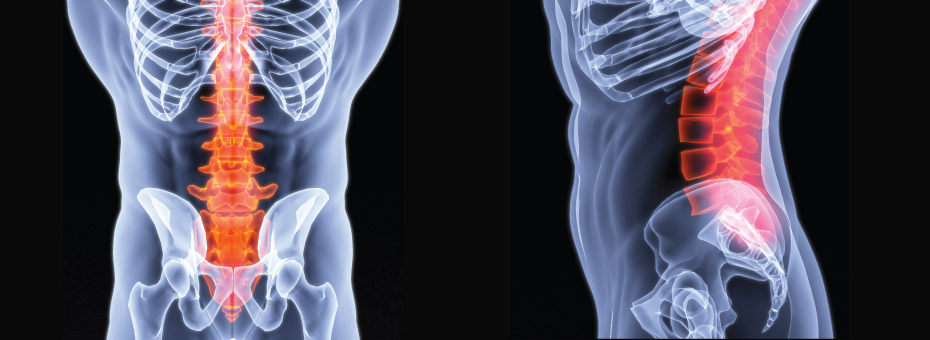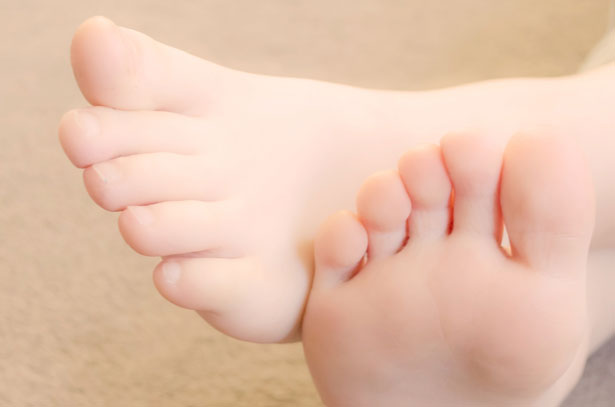Low back pain
Many people experience an episode of low back pain at least once in their lives. Sometimes, it will cause a person to seek treatment from a back specialist, physcial therapy, and even surgery. Most doctors will tell you that low back pain is self-limiting, and that a few days of rest, perhaps a muscle relaxant and some gentle movement will help resolve the low back pain.
This works. Temporarily.
There are several muscle groups that attach to the pelvis. This is important to know because the pelvis contains three bones (two ilia and one sacrum) that form the base for the spinal column. The spinal column is essentially a protective cage for your spinal cord, which relays information about your environment and movement to and from the brain so that you stay alive. That’s the anatomy lesson in a nutshell.
So how can you fix your low back pain?
First, I’d suggest that you get checked out by a doctor to make sure that there is not a serious underlying condition. Most episodes of back pain are related to muscles that are overworked and unbalanced. As I tell my patients, the muscles in the body work to keep everything aligned from front to back, top to bottom, and side to side. Any weakness anywhere in that system is going to recruit muscles to provide support, and over time sometimes those adaptations fail.
Most people who have low back pain point to the low back as their problem area.
The problem with most episodes of low back pain, surprisingly, is not from muscles in the back! The problem is caused by muscles that tug on the pelvis to keep it out of alignment. Just about every patient who comes into my office for treatment has some sort of pelvic torsion. I can massage tight muscles and deliver chiropractic adjustments to the low back all day long and it will give the patient temporary relief, but it doesn’t fix the issue. Only when the muscles that are attached to the front of the pelvis are addressed, will my patient experience lasting relief.
Broadly categorized, these muscles are divided into four groups: the extensors, flexors, abductors and adductors.
Hip extensors are muscles generally located in the back and function to extend the leg backwards. Hip flexors are located in the front of the body and function to move the thigh bone forward, such as when we are sitting or climbing stairs. Hip adductors help to keep the body upright when walking so we don’t tip over to the side and hip abductors also provide counterbalance to these movements. These muscles do not work independently of each other, and I’ve only separated them out to talk about them in this article.
Because we live in an industrialized society where we sit for many of our waking hours, our hip flexors become tight and not really good at maintaining a balanced existence with the other muscle groups. This effectively keeps the pelvis tilted forward and over time, our body adapts to this posture by increasing the curve in our lower back. Usually, people start to experience low back pain in their 20’s and especially so if they have been in a car accident.
How to fix your low back pain
One of the things that I like to check on my patients is the tension in one of the hip flexor muscles known as the iliopsoas. It’s uncomfortable to have someone to feel for tension in this muscle and the most effective way to encourage it to move better is to do activities that lengthen this muscle. Disclaimer here: if you have low back pain, please schedule an appointment with a physician to rule out serious conditions. These activities described below should be attempted after you’ve been cleared to try them.
Triangle pose
The yoga pose known as the triangle pose is a great way to target a few different muscle groups.
Start by standing with your legs apart in a stance that is twice as wide as your shoulders. One foot will be facing directly forward (12:00 o’clock on a clock face) and your right foot will be facing at the 3:00 o’clock position. Your legs should be in alignment with each other, as if you were standing on a line. This ensures that your hips are in perfect alignment. Also, your knees should be directly over your feet. This means that the rotation of your legs comes from the hip joints, not the ankles.
Extend your torso to the right directly over the right leg. Imagine that your body is sandwiched between to planes of glass. This will keep your left shoulder from rolling forward. Bend towards your right from the hip, not the waist. You can press down through the feet to balance your post and lengthen your body. Let your right hand slide down your right leg until you feel a stretch, then stop and hold that post. Again, do not rotate your torso if you feel like the stretch is too deep, but instead come into more upright position if you need to.
With your left hand, raise your arm so that you are pointing towards the ceiling. You can turn your head to look up at the ceiling if you can do so without experiencing any pain. Sometimes, people who’ve been in car accidents can feel that this head movement is too painful. The goal of this stretch is to lengthen muscles in your body that are shortened because of underuse or injury.

Wall V Stretch
Sit on the floor with your legs in front of you and along the side of a wall. Position yourself so that while you are laying down, your legs are up on the wall in a V shape, with your toes pointed towards your head (not the ceiling). Allow gravity to open your legs towards the floor, but don’t push your legs against the wall. The stretch is reached when you feel a gentle tension around the inside of your knees. You can hold this pose as long as you are comfortable, but no less than two minutes. If you can’t reach the two minute mark, bring your legs closer to midline so that the stretch isn’t as intense. Over time, you will be able to let your legs fall closer to the floor. Don’t force it.
Feeling better
If you keep up with these two stretches, at least twice daily for 5-10 minutes each, your low back pain will improve. Your range of motion will increase and your low back pain won’t be as problematic as it was before. Give it a try and comment below!




